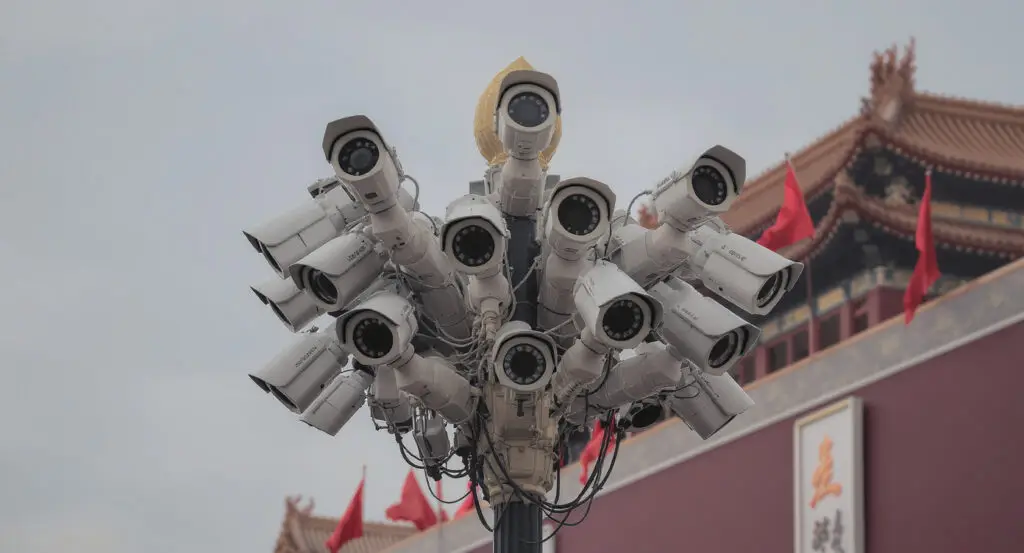A significant new technological race is underway, pitting China’s rapidly advancing artificial intelligence models against Silicon Valley’s pursuit of superintelligence. Chinese AI models are quickly closing the gap with their Western counterparts, leading to a growing number of companies and organizations worldwide integrating them into their operations. This trend not only poses a competitive threat to American and other Western firms but also introduces a considerable geopolitical risk, as widespread global adoption could potentially provide the Chinese Communist Party with a conduit for spreading propaganda, disseminating fake news, and siphoning sensitive information across the globe.
Chinese AI Models Demonstrate Cost-Efficiency
Despite operating under strict semiconductor export controls imposed by the U.S. government, China has proven its capacity to compete effectively in the AI domain. In January, DeepSeek unveiled its R1 model, which showcased performance levels comparable to those from leading Western developers like OpenAI or Google. Crucially, DeepSeek claims its R1 model was trained at a fraction of the cost and computing power typically required, and it demands significantly less computing power to run. Since this debut, other major Chinese AI companies, including Alibaba, Huawei, and Baidu, have launched their own models exhibiting similar characteristics of efficiency and strong performance.
Global Adoption Beyond Western Dominance
These Chinese AI models are now gaining substantial traction in a field that, until recently, was almost exclusively dominated by Western, particularly American, companies. According to the Wall Street Journal, international banks, public universities, energy companies, and various other businesses, primarily located in Europe, the Middle East, Africa, and Asia, are increasingly adopting models from DeepSeek or Alibaba as viable alternatives to American offerings.
This shift is partly driven by the lower operating costs associated with Chinese models, which often outweigh any modest differences in their capabilities. Notable examples include HSBC and Britain’s Standard Chartered, which have begun internal tests of DeepSeek’s models, and Saudi Aramco, which recently installed DeepSeek in its main data center. In Japan, AI startup Abeja opted to develop custom models for the Ministry of Economy, Trade and Industry using China’s Qwen models over those from Meta or Google.
Shifting Landscape in AI App Market
While OpenAI remains the dominant player in the AI application market, with its ChatGPT app boasting an impressive 910 million downloads according to Sensor Tower, DeepSeek is rapidly emerging as a formidable rival. DeepSeek’s app has already accumulated 125 million downloads, indicating its growing user base. Furthermore, on Latenode, a platform designed to help organizations build custom AI tools, at least 20% of users are now choosing DeepSeek models for their development needs, showcasing its increasing preference among developers and businesses for custom AI solutions.
Strategic Priorities: Practicality Over Superintelligence
A key factor contributing to the success and growing adoption of Chinese AI models lies in their distinct strategic priorities. American AI companies tend to heavily invest in groundbreaking research and the ambitious pursuit of artificial general intelligence (AGI).
In contrast, Chinese companies prioritize the development of practical, immediately useful applications that are specifically designed to attract new users and address current business needs. While this approach may be less ambitious than building superintelligence, it proves more directly relevant and appealing for businesses seeking readily deployable AI solutions today. Additionally, Chinese firms often benefit from releasing many of their models as open source, granting users greater control over implementation and customization, which further accelerates adoption.
Impact on American AI and Geopolitical Stakes
The immediate consequences of this growing trend are being felt by American AI companies, which invest vast sums in developing advanced models and rely heavily on large business contracts for essential revenue. OpenAI, for example, has been actively expanding its global presence by opening offices in Europe and Asia this year to secure international market share.
Unsurprisingly, American executives are among the first to voice alarms about the global proliferation of Chinese AI models. Microsoft President Brad Smith recently emphasized to the U.S. Senate that “The No. 1 factor that will define whether the U.S. or China wins this race is whose technology is most broadly adopted in the rest of the world. Whoever gets there first will be difficult to supplant.”
Far-Reaching Consequences: Propaganda and Surveillance Risks
The potential for Chinese dominance in AI carries far-reaching geopolitical consequences. For instance, DeepSeek’s R1 model is known to censor content deemed inconvenient to the Chinese Communist Party, refusing to answer questions about sensitive events like the Tiananmen Square massacre and asserting that Taiwan is part of China.
As modern AI chatbots increasingly replace traditional search engines, such tightly regulated bots could easily become channels for disseminating propaganda and misinformation, delivered with the confident, authoritative tone characteristic of generative AI. Moreover, these models could serve as powerful surveillance tools, building detailed personal profiles of users. If Chinese companies grant government access to this data, Beijing could potentially conduct sweeping surveillance of individuals worldwide, including those in sensitive positions, mapping their identities, roles, and potential vulnerabilities, thereby aiding in the identification of individuals susceptible to pressure or blackmail.



















